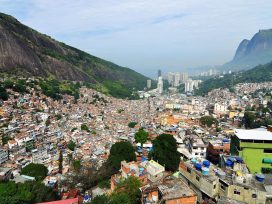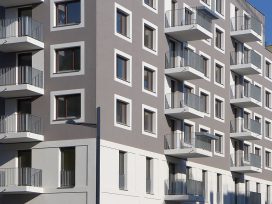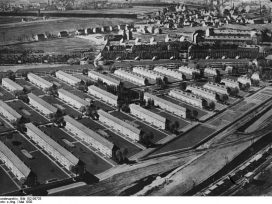Urban redevelopment in Hong Kong, which is purely commercially-driven and generally favours lucrative property developments, has increasingly come into conflict with heritage sites and local culture at large. The demolition of the Star Ferry pier in December 2006 not only created a major outcry among local communities, but also prompted a general discussion about the lack of concern for the conservation of local cultural heritage in the government’s urban redevelopment policy. This lack of concern is especially apparent in the government’s short-sighted, profit-oriented attitude and in its indifference towards Hong Kong’s cultural heritage.
Confronted with the need to become key players in the world city league, major cities worldwide, especially post-industrial cities and cities in Southeast Asia, constantly re-adapt and re-invent themselves in line with changes in the international environment. Unlike their European counterparts, whose urban development focus is more about regeneration rather than redevelopment, urban planning in Asian cities, including Hong Kong, often takes a more radical approach: old buildings and districts are simply pulled down overnight; giant shopping plazas replace historical neighbourhoods; completely new urban landscapes are created from scratch, depending on what flashy projects are being planned to compete with their international or regional counterparts.
Demolition and the disappearance of cultural heritage is nothing new in Asian cities. Even the hutongs, the narrow alleyways that have run around the city centre of Beijing since the Ming Dynasty, have been demolished without particular emotion. Why, then, is the demolition of a mere ferry pier and its clock tower in Hong Kong worth our attention?
Before the British took over and developed Hong Kong into a world financial centre, the region was simply a set of small villages with a discernable tribal heritage. With its mere 155 years of (colonial) history, Hong Kong has no specific national or historical sites that would fit Unesco’s cultural heritage list, which implicitly operates on a national level. Instead, heritage conservation in Hong Kong is very much about preserving everyday culture and keeping intact the collective memories of the citizen.
The Star Ferry pier and clock tower, built in 1958, is one of the few remaining streamline modern public buildings in Hong Kong. In 1966, it was the site of protests triggered off by the British colonial government’s decision to increase the Star Ferry fare by 25 per cent. It therefore is part of the collective memory of millions of Hong Kong citizens and represents its distinctive, local, grassroots culture.
Hong Kong’s cultural identity
The search for Hong Kong’s cultural identity was a difficult and intricate issue long before the handover in 1997. Although Hong Kong is a “postcolonial” site, it does not fit into any conventional definition of the postcolonial, since it was neither an independent national state before British rule nor did it gain its independence after the handover. Today, it is a self-administrated region, yet situated inside and belonging to China and governed according to the principle of “one country, two systems”. Hong Kong’s struggle with its cultural identity and its need to position on the international stage is indeed an ideologically challenging task and, in its current practice, very contradictory. The issue of conserving local cultural heritage in Hong Kong exists on another level of meaning and requires another dimension of investigation than in other Asian countries.
Victoria Harbour, which is literally the “origin” of Hong Kong and the reason why the city thrives, has undergone three phases of reclamation since the government launched the Central and Wan Chai reclamation projects in the 1990s. Along both sides of the waterfront are the central business districts, a factor that is a driving force behind the projects. Some of the highest land prices in the city, and the world, can be found in this district.
The third phase of the Central reclamation project involved reclaiming 16 hectares of land along the harbour for the Airport Express train station, the west section of the proposed North Island Line, the Central-Wan Chai Bypass, new Star Ferry piers, new roads, and other business facilities, with an estimated cost of approximately euro 330 000. With the passing of the proposal in 2002, the fate of the Star Ferry pier (demolished in December 2006) and Queen’s pier (closed for demolition in April 2007) was inevitable.
However, this is not the first time that a former ferry pier was closed down due to reclamation. Blake’s Pier was demolished in the early 1990s to make way for the first phase of the Central reclamation project. The proposal of the third phase reclamation and the decision to demolish these piers triggered strong public sentiments and protests among the local community.
Public reaction
On the last day of ferry service, the 11 November 2006, 15 000 visitors came to catch a last glimpse of the pier and take their last rides. Before the demolition, several political parties and numerous community groups jointly urged the public to fight for the preservation of the pier; activists launched several high-profile protests; In-Media, an online magazine run by activists, promoted the issue via their website; the SEE (Society/Environment/Economy) network, which campaigns for conservation and sustainable urban development in Hong Kong, organised activities and forums to mediate the issue to the general public; and under the initiative and direction of Kith Tsang, educator and artist, a group of young people occupied the public space near the pier and staged art performances in response to government’s decision.
Art in public space is rare in Hong Kong, especially as a means to mediate social and political issues. This series of art interventions were the first of their kind in the Hong Kong art scene. The group of artists performed every Sunday afternoon from August 2006 and even after the demolition. The artists included performance artist Leung Po Shan and a group of young artists who were originally participants of summer workshop on “art in public space”, run by Kith Tsang. The actions were launched to inform the larger public about the demolition and to develop the younger generation’s conception of public space.
According to Tsang, art in public space is an expressive and effective response to what is happening in Hong Kong, especially for those who cannot voice their opinions in the mass media. Tsang claims that the government adopted sophisticated methods to push forward the Central reclamation project, alienating public participation and denying the public the right to participate in the urban planning process.
As an activist himself, Tsang believes that cultural preservation is not only about hardware, but also about human life. The government should provide support and should work for the betterment of people. The development model of urban renewal being adopted in Hong Kong tends to destroy social networks, especially those of the elderly. For example, the government reimburses evicted residents up to the market price of their properties. This, of course, is at a great disadvantage for the elderly, who live in older buildings that have not been renovated in recent decades and so have a very low market value.
Bulldozing sites for developers
The Star Ferry pier demolition is just one of many local cultural sites that have been or are being demolished. Others worth noting are:
– Lee Tung Street (under redevelopment) – also known as Wedding Card Street in the local community, after the traders who sold and printed wedding cards, name cards, and traditional Chinese calendars. The old neighbourhood was demolished to make way for new residential high rises and shopping malls. The community group fought for three years against the demolition.
– Queen’s pier (closed for demolition in April 2007) is the second pier in Hong Kong, purpose built in 1953-54 as a ceremonial and public pier. It was the landing place for many former Hong Kong Governors, as well as prominent officials and figures within and outside Hong Kong. Activists, conservationists, and community groups have campaigned to save Queen’s Pier, including, sit-in, protests, and hunger strikes.
– Wan Chai Market (demolition was scheduled to start in early 2008) was built in 1937 and is one of the last markets with streamline modern architecture. The site is due to be redeveloped into a luxury residential-commercial complex.
– Central Police Station (ceased operation in December 2005) and Victoria Prison, which were built adjacent to each other, are the declared monuments of Hong Kong and among its few remaining colonial heritages. The oldest part of the police station was built in 1864. Yet real estate developers have their eyes on the units that have ceased to operate.
The road ahead
While the government has been bulldozing valuable sites that have been an integral part of Hong Kong’s everyday culture over the past decades, it has also been investing extravagantly on brand new “heritage” attractions for the lucrative tourist industry. One major “heritage”/tourism project is the “Ngong Ping 360”, which consists of the Ngong Ping Skyrail and the Ngong Ping Village.
The Ngong Ping Skyrail is a 5.7 km long cable car linking Ngong Ping, where the giant Buddha and Po Lin Monastery are located, and Tung Chung, the area nearest to Hong Kong’s airport. The Ngong Ping Village is built next to the Skyrail Terminal in traditional Chinese architectural style and fitted out with key attractions from Chinese cultural attractions and international retail chains.
In 2001, in its search for a new image after British rule, the tourist board decided to brand Hong Kong as “Asia’s World City”. Hong Kong has suddenly decided to exploit, in stereotypical fashion, its roots in Chinese culture and heritage. Hong Kong Disneyland, the Ngong Ping 360, and other touristy add-ons to the waterfront of the shrinking Victoria Harbour (including Bruce Lee’s sculpture in the Avenue of Stars), reveal that the government’s prime concern is income-generation, without genuine consideration of local cultural context or quality of life.
Problematic urban redevelopment in Hong Kong goes hand in hand with clumsy imaging strategies: shopping malls are still mushrooming in Hong Kong even though there is little room or genuine need for them; more “spectacular” tourist experiences are constructed and endless clichéd cultural representations are still being generated. Without a genuine understanding and respect for its local culture, the government’s current development model will most likely create a generic megalopolis, where Hong Kong will take its place alongside many other Chinese cities, and thereby most certainly defeat its ambition to become “Asia’s World City”.






